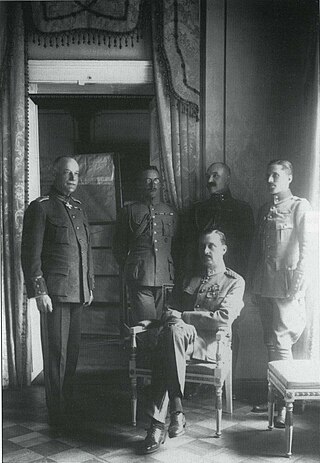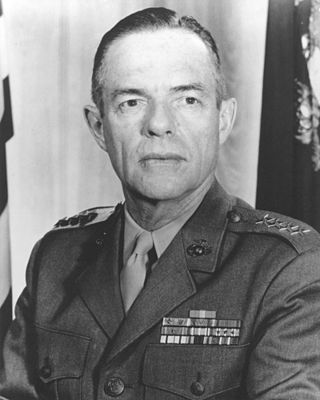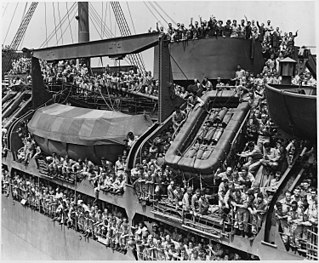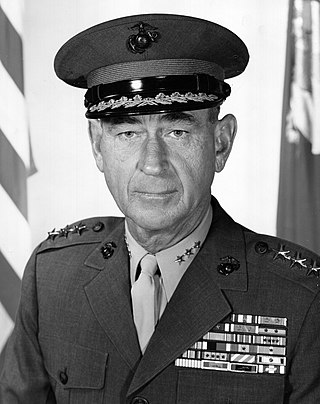Related Research Articles

Military ranks are a system of hierarchical relationships, within armed forces, police, intelligence agencies or other institutions organized along military lines. The military rank system defines dominance, authority, and responsibility in a military hierarchy. It incorporates the principles of exercising power and authority into the military chain of command—the succession of commanders superior to subordinates through which command is exercised. The military chain of command constructs an important component for organized collective action.

Military police (MP) are law enforcement agencies connected with, or part of, the military of a state. In wartime operations, the military police may support the main fighting force with force protection, convoy security, screening, rear reconnaissance, logistic traffic management, counterinsurgency, and detainee handling.

Adjutant is a military appointment given to an officer who assists the commanding officer with unit administration, mostly the management of human resources in an army unit. The term adjudant is used in French-speaking armed forces as a non-commissioned officer rank similar to a staff sergeant or warrant officer but is not equivalent to the role or appointment of an adjutant.

A military discharge is given when a member of the armed forces is released from their obligation to serve. Each country's military has different types of discharge. They are generally based on whether the persons completed their training and then fully and satisfactorily completed their term of service. Other types of discharge are based on factors such as the quality of their service, whether their service had to be ended prematurely due to humanitarian or medical reasons, whether they had been found to have drug or alcohol dependency issues and whether they were complying with treatment and counseling, and whether they had demerits or punishments for infractions or were convicted of any crimes. These factors affect whether they will be asked or allowed to re-enlist and whether they qualify for benefits after their discharge.
An Overseas Service Ribbon is a service military award of the United States military which recognizes those service members who have performed military tours outside the borders of the United States of America. There are different versions of the Overseas Service Ribbons for the U.S. Army, U.S. Navy, U.S. Air Force, U.S. Space Force, and the U.S. Coast Guard. Both the U.S. Navy and the U.S. Marines receive the Navy and Marine Corps Overseas Service Ribbon.

Wilbur Bestwick was a United States Marine who served as the first Sergeant Major of the Marine Corps from 1957 to 1959.

Albert Bryant Jr. is a retired United States Army brigadier general, best known for service as the Chief of Western Hemisphere Operations during and in the aftermath of the September 11 attacks and for his tenure as the Assistant Division Commander of the 4th Infantry Division at the time of the division's detection and capture of deposed Iraqi president Saddam Hussein. Bryant also served as the Deputy Commander of Fort Knox, Kentucky, and the United States Army's Armor School. As Chief of Staff of NATO's Kosovo Force (KFOR), Bryant was the highest ranking American general on the KFOR leadership team in the lead up to Kosovo independence.

Wallace Martin Greene Jr. was a United States Marine Corps four-star general who served as the 23rd Commandant of the Marine Corps from January 1, 1964, to December 31, 1967.

Francis Drury Rauber was a United States Marine who served as the 2nd Sergeant Major of the Marine Corps from 1 September 1959 until his retirement from active duty on 28 June 1962.

Samuel Jaskilka was a U.S. Marine four-star general whose last assignment was Assistant Commandant of the United States Marine Corps (1975–1978). General Jaskilka was a highly decorated veteran of the Korean War, having led the landing at Inchon as a company commander with the 2nd Battalion, 5th Marines. He retired from the Marine Corps in 1978 after 36 years of service.

Palo Alto Networks, Inc. is an American multinational cybersecurity company with headquarters in Santa Clara, California. The core product is a platform that includes advanced firewalls and cloud-based offerings that extend those firewalls to cover other aspects of security. The company serves over 70,000 organizations in over 150 countries, including 85 of the Fortune 100. It is home to the Unit 42 threat research team and hosts the Ignite cybersecurity conference. It is a partner organization of the World Economic Forum.
In the United States Army (USA), U.S. Marine Corps (USMC), U.S. Air Force (USAF), and U.S. Space Force (USSF), captain is a company-grade officer rank, with the pay grade of O-3. It ranks above first lieutenant and below major. It is equivalent to the rank of lieutenant in the Navy/Coast Guard officer rank system and is different from the higher Navy/Coast Guard rank of captain. The insignia for the rank consists of two silver bars, with slight stylized differences between the Army/Air Force version and the Marine Corps version.

The Demobilization of United States armed forces after the Second World War began with the defeat of Germany in May 1945 and continued through 1946. The United States had more than 12 million men and women in the armed forces at the end of World War II, of whom 7.6 million were stationed abroad. The American public demanded a rapid demobilization and soldiers protested the slowness of the process. Military personnel were returned to the United States in Operation Magic Carpet. By June 30, 1947, the number of active duty soldiers, sailors, Marines, and airmen in the armed forces had been reduced to 1,566,000.

Donn John Robertson was a highly decorated officer of the United States Marine Corps with the rank of lieutenant general. He is most noted for his service as commanding general of III Marine Amphibious Force and 1st Marine Division during Vietnam War.

Clarence Rodney Wallace was a decorated officer of the United States Marine Corps with the rank of brigadier general. He is most noted for his service as commanding officer of the 8th Marine Regiment during World War II.

Henry Dallas Linscott was a decorated officer of the United States Marine Corps with the rank of lieutenant general. He is most noted for his service on the staff of Amphibious Force Commander, Admiral Richmond K. Turner during World War II and later as the commanding general of the Department of the Pacific and Camp Lejeune.

Ronald Reginald Van Stockum was a decorated officer of the United States Marine Corps with the rank of brigadier general. A veteran of Bougainville, Guam and Iwo Jima campaigns, Van Stockum was most noted for his service as director of the Marine Corps Reserve and later as commanding general of the Fleet Marine Force, Pacific (Forward) on Okinawa during the Vietnam War.

Joseph Charles Fegan Jr. was a highly decorated officer in the United States Marine Corps with the rank of lieutenant general. A son of Major General Joseph C. Fegan, he received several citations for bravery during three wars and completed his career as commanding general, Marine Corps Development and Education Command.
William Reading Montgomery was a career United States Army officer who served in the Second Seminole War and Mexican–American War. He was a brigadier general in the Union Army from May 17, 1861, to April 4, 1864, during the American Civil War.
References
- 1 2 3 4 "At Your Service", Daily Palo Alto Times, Palo Alto, California, 53rd year, number 100, April 26, 1945, page 11. (subscription required)
- ↑ "Discharge of Marines Is Increasing at Quantico", The Free Lance–Star , Fredericksburg, Virginia, September 17, 1945 available at the U.S. Military Forum website under "What Is a WWII USMC Casualty Company", posted Posted July 20, 2009. Retrieved January 12, 2023.
- ↑ "Ed Wood Wednesdays, week 101: "Casual Company: The Laugh of the Marines" (1948)", May 13, 2020. Note, this is from the online blog Dead 2 Rights by Joe Blevins and provided for information only.